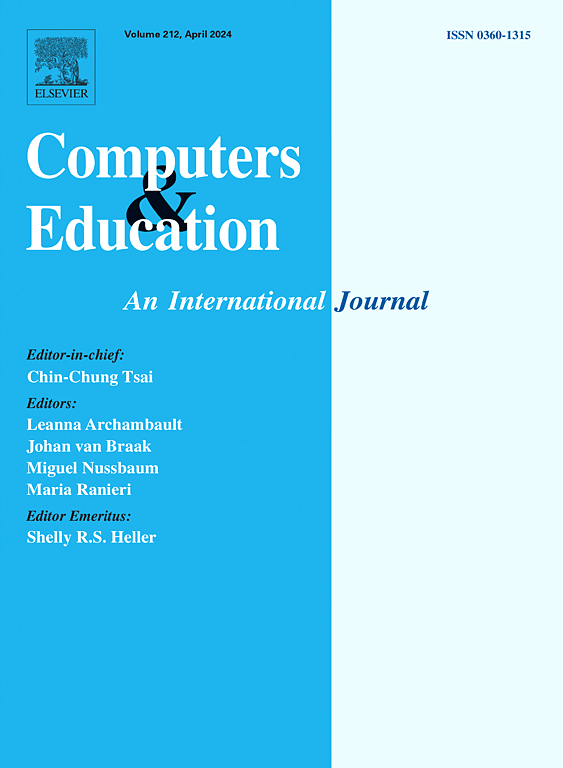数字媒体的使用和可用性可以缓解数字鸿沟:来自PISA 2022的元分析见解
IF 10.5
1区 教育学
Q1 COMPUTER SCIENCE, INTERDISCIPLINARY APPLICATIONS
引用次数: 0
摘要
数字鸿沟通常被描述为社会经济地位(SES)与数字能力之间的关系,在教育研究中引起了极大的关注,特别是自2019冠状病毒病大流行爆发以来。然而,尽管各国和各学校都在努力促进数字化,但关于学校或国家层面的因素在多大程度上可以调节社会经济地位(SES)与数字能力之间的关系(文献中通常将这种联系称为第二级数字鸿沟)的研究有限。本研究通过使用包含52个国家(N = 393607)的2022年国际学生评估项目(PISA)的数据,并采用综合元分析方法,研究了SES与数字能力之间的关系,解决了这些差距。我们发现社会经济地位与两项数字能力指标之间存在正相关;自我效能感和与在线信息相关的实践(β总结效应= 0.15,95% CI[0.14, 0.16])。β总效应= 0.11,95% CI[0.10, 0.12])。此外,调节分析表明,数字媒体的充分可用性和高质量使用,如基于探究的学习方法,可以缓解社会经济地位与数字能力之间的积极关系,这一效应有望减少数字不平等。本研究对现有的研究体系做出了贡献,对可能缓解数字鸿沟的国家层面因素提供了更细致的理解。此外,它还强调了有针对性的干预措施的潜在方法,旨在解决使数字不平等永久化的与ses相关的差异。本文章由计算机程序翻译,如有差异,请以英文原文为准。
Digital media use and availability can mitigate the digital divide: Meta-analytic insights from PISA 2022
The digital divide, commonly described as the relationship between socioeconomic status (SES) and digital competence, has garnered significant attention in educational research, particularly since the onset of the COVID-19 pandemic. However, despite ongoing efforts to promote digitalization across countries and schools, there has been limited research into the extent to which school-level or country-level factors can moderate the relationship between socioeconomic status (SES) and digital competence—an association commonly referred to in the literature as the second-level digital divide. This study addressed these gaps by examining the association between SES and digital competence using data from the Programme for International Student Assessment (PISA) 2022, encompassing 52 countries (N = 393607) and employing an integrative meta-analytical approach. We found positive associations between SES and two measures of digital competencies; self-efficacies, and practices related to online information (βsummary effect = 0.15, 95 % CI [0.14, 0.16]. βsummary effect = 0.11, 95 % CI [0.10, 0.12]). Furthermore, moderator analyses showed that the adequate availability and high-quality use of digital media, such as inquiry-based learning methods, can mitigate the positive relationship between SES and digital competence, an effect that holds promise for reducing digital inequalities. This study contributes to the existing body of research by providing a more nuanced understanding country-level factors that may mitigate the digital divide. Furthermore, it highlights potential approaches for targeted interventions aimed at addressing SES-related disparities that perpetuate digital inequalities.
求助全文
通过发布文献求助,成功后即可免费获取论文全文。
去求助
来源期刊

Computers & Education
工程技术-计算机:跨学科应用
CiteScore
27.10
自引率
5.80%
发文量
204
审稿时长
42 days
期刊介绍:
Computers & Education seeks to advance understanding of how digital technology can improve education by publishing high-quality research that expands both theory and practice. The journal welcomes research papers exploring the pedagogical applications of digital technology, with a focus broad enough to appeal to the wider education community.
 求助内容:
求助内容: 应助结果提醒方式:
应助结果提醒方式:


